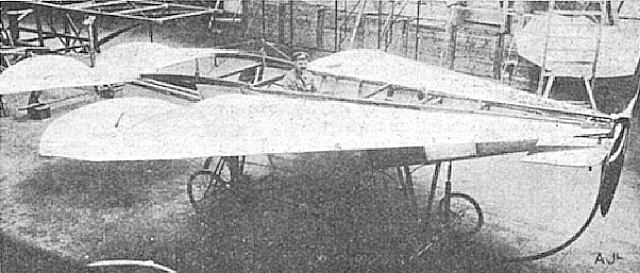After prepping the hinges it's time to attach the main stabilator skins to the skeleton with clecos and start riveting. The right skin I did myself but for the left one the assembly was too awkward and bulky so I needed help nudging the forward ribs and skin holes to line up. Fortunately relatives came over and volunteered to help ("volunteered" - sounds much nicer than "drafted" doesn't it?).
We always start riveting at the leading edge and work our way back.
After a while the rivet tool was getting less and less of a grip on the rivet post and started requiring 7, 8 or 9 squeezes to "pop" the rivet. Driven to exasperation I disassembled it, sprayed out the barrel with automotive prep clean followed by WD-40, reassembled it and tried it on a rivet. Better, but it still wasn't getting good bite. Then I put a washer on the interchangeable nose of the tool and after that it worked perfectly: squeeze, squeeze, squeeze, POP!
530 pop rivets later the stabilator skins are on! Keeping things in perspective, however, that's just a dent in the box of 10,000 rivets shipped to me by Vans to build the airplane.
The next step calls for attaching the aft trim tab hinge to the back of the stabilator. Before riveting I checked to see if the trim tabs would fit by installing the trim tabs and hinge pin. It was a tight fit but seemed okay so I cleco'd the hinge onto the back of the stabilator with the trim tab still on. Here's a picture of the control horns where the two trim tab halves meet:
After the test fit the trim tab was removed and the hinge(s) and splice plate were riveted on. By this point I had "popped" 670 rivets and my hand was sore from all the squeezing on the rivet tool so I took a break from popping any more rivets.
I did, however, cleco on the aft stabilator ribs (4) and skins to see how they would look. I was concerned with how I would ever get the trim tab hinge pins in once the aft ribs and skins were on. Reading ahead shows that the hinge pins are sharpened on one end and inserted from the middle by bending it. The other end is bent into an "L" shape and safety wired in place. Inserting the hinge pin promises to be a PITA difficult and I wondered why we don't just put the AST trim tab on now while there's still easy access to the hinge pin holes. Upon further reflection it occurred to me that the inboard aft skin ribs need to be bent over a little to get the rivet tool on the rivets and that would not be possible with the trim tab(s) on.














